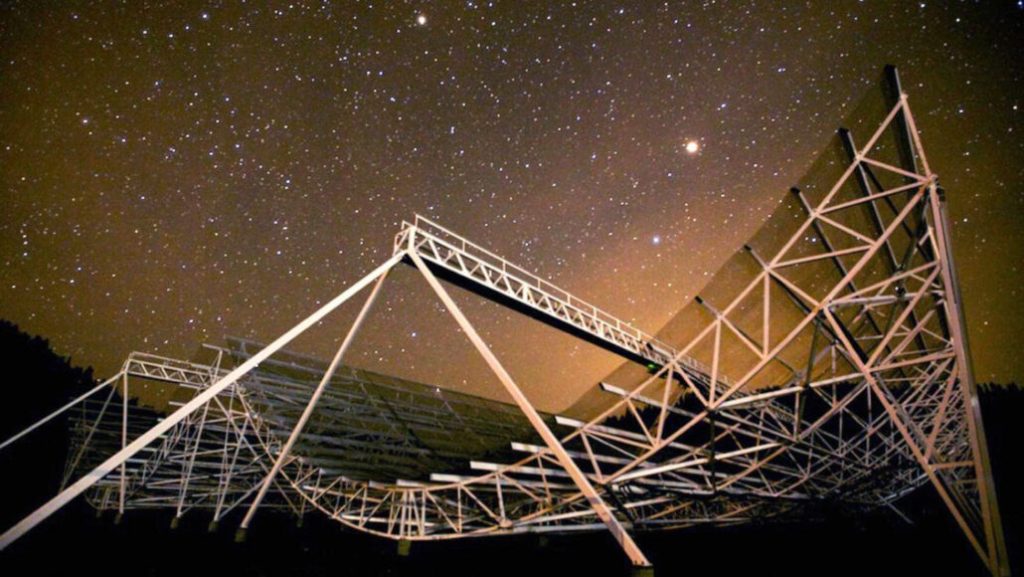A fast radio burst’s rapid, steady beat offers a clue to its cosmic origin

An unusual blast of radio waves from deep space had a sense of rhythm. Over the few seconds in December 2019 when the burst was detected, it kept a steady beat. That tempo holds clues to the potential origin of the mysterious outburst, one of a class of flares called fast radio bursts.
Of the hundreds of previously detected fast radio bursts, most last for mere milliseconds. But this one persisted for roughly three seconds, Daniele Michilli and colleagues report in the July 14 Nature. The burst consisted of multiple brief pulses, repeating about every two-tenths of a second.
Scientists have previously observed fast radio bursts that repeat with a delay of minutes or days (SN: 3/2/16). “With this one it was a train of [pulses] one after the other, a heartbeat, like, ‘boom boom boom boom,’” says Michilli, an astronomer at MIT.
That makes this fast radio burst very special, says astrophysicist Bing Zhang of the University of Nevada, Las Vegas, who was not involved with the research. Compared with other fast radio bursts, “this is a different animal.”
Scientists still don’t know how fast radio bursts are generated, but evidence has been building that they are associated with ultradense, spinning dead stars called neutron stars and, in particular, highly magnetic neutron stars called magnetars (SN: 6/4/20).
The steady repetition rate hints at what may have caused this particular blast, discovered by the Canadian Hydrogen Intensity Mapping Experiment, a radio telescope in British Columbia.
Only certain types of cosmic processes produce such metronome-like signals. Neutron stars, for example, can appear to pulse as they spin, because they emit beams of radio waves that can sweep past Earth at regular intervals. Neutron stars tend to have tempos similar to that of the pulsating fast radio burst. But that burst was much more luminous than normal neutron star pulses, suggesting some unknown process would need to have amped up the emission.
Another idea is that large outbursts on magnetars could cause starquakes that jostle those stars’ solid crusts, generating regular barrages of radio waves. The rhythmic burst’s pulsing “is sort of consistent with a frequency with which we expect that magnetars could be shaking,” says astrophysicist Cecilia Chirenti of the University of Maryland in College Park, who was not involved with the new study.
Or the pulsing might result from two neutron stars that orbit one another. Outbursts could occur at regular points in that orbit, when the magnetic regions that surround each neutron star interact.
Scientists don’t know if all fast radio bursts are generated in the same way. An outlier like this one might have a different origin story than a more standard, one-off blast. That means it’s hard to make conclusions about other fast radio bursts, Zhang says. “Whatever we can derive from this one, I would not easily extrapolate to the other guys.”